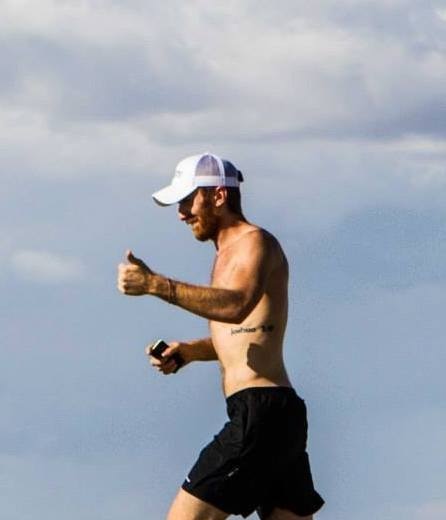What is delayed onset muscle soreness (DOMS)?

Have you ever felt great after finishing a race, hard workout, or long run only to wake up the following day or two limping around like you just ran 100 miles? Don't worry, it's entirely common and just about every runner has experienced it at some point. The phenomenon is called delayed onset muscle soreness (DOMS), and it's actually a sign that your body is getting stronger.
Delayed onset muscle soreness is defined as muscle pain or stiffness a day or two after running. It can range from mild soreness to severe pain or stiffness and can affect anyone who is increasing mileage or intensity, especially after a hard race. It's an entirely normal response to the demand you're asking of your body.
DOMS will typically go away on its own after a few days, but here we'll cover some tips and tricks to help you prevent getting it and recover quickly after having it.
Gradually build mileage and intensity
One of the main reasons delayed onset muscle soreness occurs is building mileage and/or intensity too quickly. If you train for your first 5K for only three weeks, the likelihood of getting DOMS is much higher than if you were to gradually build up your training over several months.
According to The Journal of Physiological Sciences, "[DOMS] is quite a common consequence of unaccustomed strenuous exercise, especially exercise containing eccentric contraction, in which muscle is being stretched while it is contracted." Since running consists entirely of muscles being stretched and contracted at the same time, it's pretty clear why we feel so sore the day after a hard run.
Prioritize proper hydration and healthy eating
When it comes to prevention, it's important to be properly hydrated before, during, and after your runs. Continue to drink plenty of water or an electrolyte drink for several days after, too, as this helps to flush any toxins that cause inflammation and keep your body functioning properly. Consider healthy, anti-inflammatory foods after your runs, such as berries, fatty fish, avocados, and dark chocolate.
Don't skip active recovery
As much as you're going to want to crash on the couch and binge-watch your favorite TV show for several days after your race, it is important to keep moving. Simply going for a walk around the neighborhood, a light yoga class, or even a bike ride through the park will do wonders for your recovery, as it keeps your muscles loose and moving and blood pumping to flush out lactic acid and other toxins that cause stiffness and inflammation.
Find relief with foam rolling or massage
According to a Journal of Athletic Training study, foam rolling or self-massage can be an affordable, easy, and time-efficient means of enhancing muscle recovery. It can help break up any muscle adhesion, increase blood flow to the area to flush inflammation from built-up toxins, and reduce stiffness and fatigue. DOMS can sometimes be uncomfortable, but it's a sure sign you've worked hard and your body is getting stronger. These tips can bring you some relief as you reap the rewards of your hard work.
Our writer's advice is intended for informational or general educational purposes only. We always encourage you to speak with your physician or healthcare provider before making any adjustments to your running, nutrition, or fitness routines.
